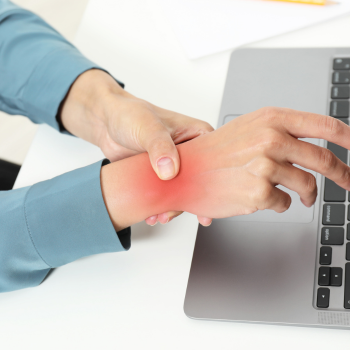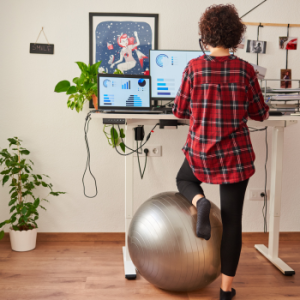Do you have full spinal range of motion but feel consistent pain and stiffness? You could have a hypermobility disorder.
This is a common situation. Especially in workers who sit in front of a computer all day long. Patients with undiagnosed hypermobility from increased collagen elasticity commonly come in seeking help for neck stiffness and headaches. Yet when checking the spine they have adequate range of motion. In most cases very little restriction at all. So, what is happening here?
This is a case of hypermobility. Our collagen elasticity determines how mobile our joints ultimately are. This is a genetically inherited trait. Some people are very hypo or low on the mobility spectrum, some are hypermobile (think circus contortionists) and the rest of us are scattered on the mobility spectrum in between these 2 extremes. The more collagen elasticity our joints have, the more mobile we are and also the more movement these joints ultimately need.
Increased collagen elasticity is often more common in women and sports that require increased levels of flexibility often select these people. Sports such as gymnastics and ballet are common examples. With adequate exercise these people are often pain free. The problems arise when exercise levels decrease, and sedentary working or study postures take over. Without proper varied movement patterns, the balance and co-ordination centres of our brain deem the joints to be slightly unstable and begin to run a tighter and rigid posture system. This increased muscular tightness then leads to pain and potential headaches.
These patients do very well with chiropractic treatment but when we are adjusting their spines, we use very gentle impulse adjusting (usually with an activator instrument) rather than the more traditional manual adjustments you may be familiar with on YouTube.
A quick explanation on how this works. Think of your nervous system like computer software. This software controls and co-ordinates every aspect of our bodies down to individual cells. Impulses will allow us to move out joints in various positions, run, jump etc.
Now all the joints in our body have receptors for movement as well. This is a two-way street. As the signals from our nervous system tell our joints to move, the moving bones simultaneously send (afferent) information about where the joints are in real time back up spinal cord and into the movement planning centres of the cerebellum. Now when a Chiropractor adjusts the spine (and using the activator for this example) the joints will be able to send much richer information on joint position back up the spinal cord into the cerebellum. As such the cortical mapping of where these joints are (think a giant picture of the skeleton) will become sharper and this requires less muscular guarding to maintain adequate function. Movement patterns become smoother and as muscle tension eases, so too does the patients pain and the feeling of “stiffness“.
Testing for hypermobility is very easy. We use a screening method known as the Beighton’s scale. The steps are as follows:
- Can the patient bend forward with straight legs and place both palms on the floor? 1 point if yes
- Can both knees hyperextend (overlock) past 10 degrees? 2 points for both knees, 1 point if only one side can hyperextend.
- Can both elbows hyperextend past 10 degrees? 2 points for both elbows, 1 point if only one side can hyperextend.
- Can the thumb pull down (Dorsiflex) to touch the forearm? Both sides = 2 points, 1 side = 1 point
- Can the pinky finger pull backwards past the 90-degree mark? Both sides = 2 points, 1 side = 1 point
Now tally up the score. A score of at least 5 defines hypermobility.
We have many active patients in the practice who have generalised hypermobility disorders and have found great relief with Chiropractic care. We hope you have found this information of benefit and If you are looking for a Chiropractor, we would love the opportunity to be of service.





